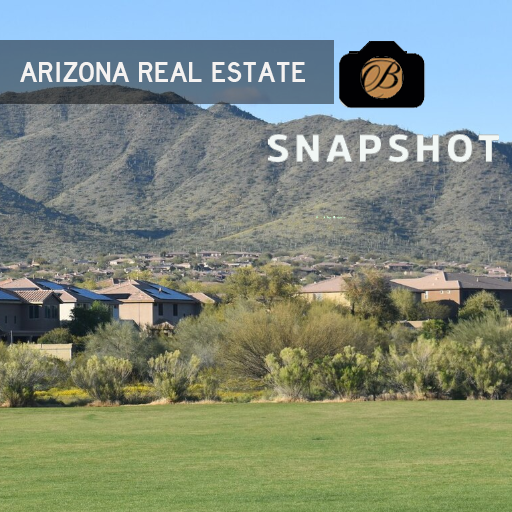Blog > Arizona Real Estate Snap Shot
 Arizona's real estate market has experienced notable shifts in recent years, influenced by economic growth, legislative changes, and evolving buyer preferences. As of January 2025, the average home value in Arizona stands at $426,237, reflecting a slight decrease of 0.2% over the past year.
Arizona's real estate market has experienced notable shifts in recent years, influenced by economic growth, legislative changes, and evolving buyer preferences. As of January 2025, the average home value in Arizona stands at $426,237, reflecting a slight decrease of 0.2% over the past year.
However, the market dynamics vary across different regions and property types.
Market Trends and Statistics
In January 2025, Arizona witnessed a 4.6% year-over-year increase in home prices. Simultaneously, the number of homes sold rose by 6.9%, and the inventory of homes for sale expanded by 22.6%.
This growth in inventory offers buyers more options, potentially easing the competitive landscape that has characterized the market in recent years.
The median home sale price in Arizona is currently $450,700, marking a modest 4% year-over-year increase. Homes have been staying on the market for an average of 63 days, indicating a more balanced market compared to previous years.
This shift suggests that while demand remains strong, buyers now have more time and choices, reducing the urgency that previously drove rapid sales.
Legislative Developments
Recent legislative actions aim to address housing affordability and availability in Arizona. The Arizona Senate passed a bill designed to reduce municipal zoning authority to encourage the construction of more affordable housing. Governor Katie Hobbs acknowledged the bill's intent but emphasized the need for a balanced approach, indicating that further refinements are necessary to ensure equitable housing solutions.
Notable Property Listings and Developments
The luxury segment of Arizona's real estate market continues to thrive. A prime example is a recently listed estate in Scottsdale, featuring an underground basketball court, two resort-style pools, a nine-hole putting green, and a jogging track. Priced at $15 million, this property showcases the high-end amenities that cater to affluent buyers seeking unique features.
In the realm of community development, the Verrado community in Buckeye exemplifies a master-planned suburban area with 7,500 homes and amenities like shopping centers, schools, and golf courses. Despite its success, plans for 4,000 additional homes face challenges due to limited groundwater availability. Arizona's moratorium on new subdivisions dependent on groundwater necessitates alternative water sources, which Verrado's supplier, Epcor, is addressing through surface and reclaimed water.
Economic Factors and Migration Trends
Arizona's appeal extends beyond its housing market. The state is among the fastest-growing, low-tax states in the U.S., attracting residents with its lower housing costs, favorable tax rates, and abundant sunshine. This influx contributes to the demand in the real estate market, as new residents seek housing options that align with their financial and lifestyle preferences.
Challenges and Considerations
While the market presents opportunities, challenges persist. Water scarcity, particularly in rapidly developing areas like Buckeye, poses significant concerns for future housing developments. Additionally, the slight decrease in average home values suggests a potential market correction, prompting both buyers and sellers to approach transactions with informed strategies.
Conclusion
Arizona's real estate market in 2025 reflects a dynamic interplay of growth, legislative initiatives, and environmental considerations. The increase in home prices and sales, coupled with expanded inventory, indicates a robust yet stabilizing market. Legislative efforts to promote affordable housing and the state's attractiveness due to favorable economic conditions continue to shape the real estate landscape. However, challenges such as resource management and market corrections require ongoing attention to ensure sustainable development and investment opportunities.
If you have any questions? call reach out to Coach Manny, Bellagio Real Estate

